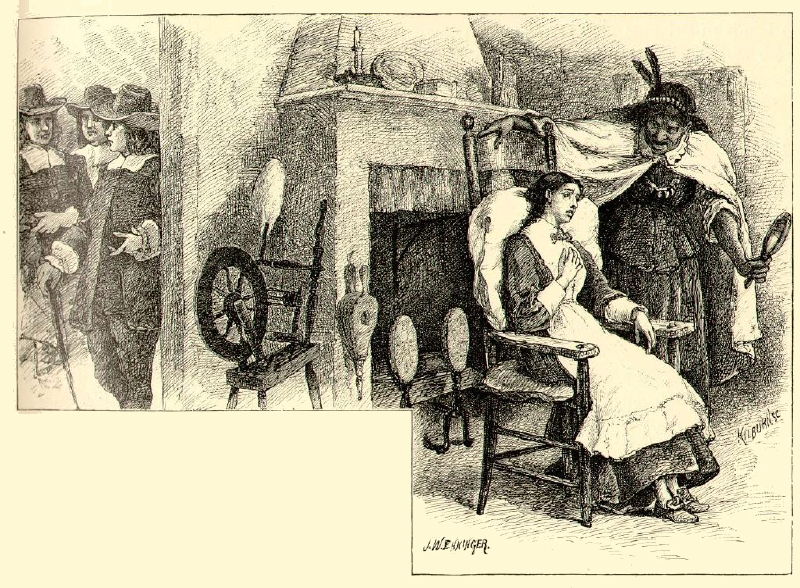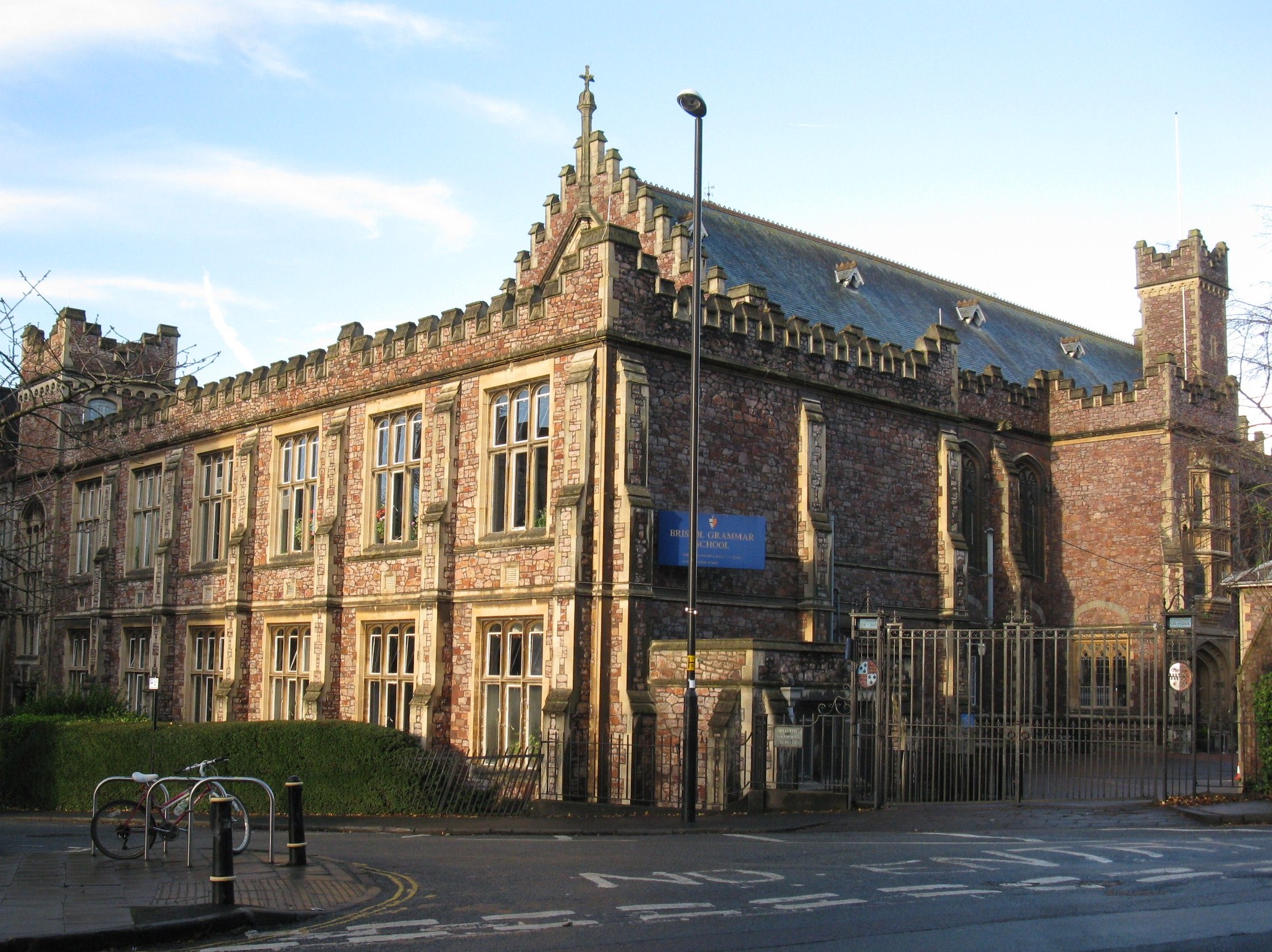|
Alexander Stopford Catcott
Alexander Stopford Catcott (1692–1749) was an English churchman from Bristol, and headmaster of Bristol Grammar School from 1722 to 1743 or 1744. He preached in favour of Hutchinsonian ideas. Career He earned a Bachelor of Laws degree but chose not to enter law; rather, he was ordained as deacon and priest, and gave up a fellowship of St John's College, Oxford, to take up the position of headmaster at Bristol Grammar School, where he and his predecessor William Goldwin were responsible for increasing enrollment from 20 to 70. From 1743 to his death in 1749 he was the rector of St Stephen's Church, Bristol. His piety was admired by John Wesley, and he was considered, by a local antiquary, to be "a good poet, profound linguist, well skilled in Hebrew and Scripture philosophy, and a judicious schoolmaster". Catcott also preached at St Mark's Church, Bristol, where he was appointed in 1729. Scientific doctrine Catcott had been corresponding since 1733 with John Hutchinson, who sa ... [...More Info...] [...Related Items...] OR: [Wikipedia] [Google] [Baidu] |
Bristol
Bristol () is a City status in the United Kingdom, cathedral city, unitary authority area and ceremonial county in South West England, the most populous city in the region. Built around the River Avon, Bristol, River Avon, it is bordered by the ceremonial counties of Gloucestershire to the north and Somerset to the south. The county is in the West of England combined authority area, which includes the Greater Bristol area (List of urban areas in the United Kingdom, eleventh most populous urban area in the United Kingdom) and nearby places such as Bath, Somerset, Bath. Bristol is the second largest city in Southern England, after the capital London. Iron Age hillforts and Roman villas were built near the confluence of the rivers River Frome, Bristol, Frome and Avon. Bristol received a royal charter in 1155 and was historic counties of England, historically divided between Gloucestershire and Somerset until 1373 when it became a county corporate. From the 13th to the 18th centur ... [...More Info...] [...Related Items...] OR: [Wikipedia] [Google] [Baidu] |
John Hutchinson (writer)
John Hutchinson (1674 – 28 August 1737) was an English theologian and natural philosopher. He was born at Spennithorne, Yorkshire, and served as steward in several families of position, latterly in that of the Duke of Somerset, who ultimately obtained for him the post of riding purveyor to the master of the horse, a sinecure worth about £200 a year. In 1700 he became acquainted with Dr. John Woodward (1665–1728), physician to the duke and author of a work entitled ''The Natural History of the Earth'', to whom he entrusted a large number of fossils of his own collecting, along with a mass of manuscript notes, for arrangement and publication. A misunderstanding as to the manner in which these should be dealt with was the immediate occasion of the publication by Hutchinson in 1724 of ''Moses's Principia'', part i., in which Woodward's ''Natural History'' was bitterly ridiculed, his conduct with regard to the mineralogical specimens not obscurely characterized, and a refutati ... [...More Info...] [...Related Items...] OR: [Wikipedia] [Google] [Baidu] |
1749 Deaths
Events January–March * January 3 ** Benning Wentworth issues the first of the New Hampshire Grants, leading to the establishment of Vermont. ** The first issue of ''Berlingske'', Denmark's oldest continually operating newspaper, is published. * January 21 – The Teatro Filarmonico, the main opera theater in Verona, Italy, is destroyed by fire. It is rebuilt in 1754. * February – The second part of John Cleland's Erotic literature, erotic novel ''Fanny Hill'' (''Memoirs of a Woman of Pleasure'') is published in London. The author is released from debtors' prison in March. * February 28 – Henry Fielding's comic novel ''The History of Tom Jones, a Foundling'' is published in London. Also this year, Fielding becomes magistrate at Bow Street, and first enlists the help of the Bow Street Runners, an early police force (eight men at first). * March 6 – A "corpse riot" breaks out in Glasgow after a body disappears from a churchyard in the Gorbals dist ... [...More Info...] [...Related Items...] OR: [Wikipedia] [Google] [Baidu] |
1692 Births
Events January–March * January 24 – At least 75 residents of what is now York, Maine are killed in the Raid on York (1692), Candlemas Massacre, carried out by French soldiers led by missionary Louis-Pierre Thury, along with a larger force of Abenaki and Penobscot Indians under the command of Penobscot Chief Madockawando during King William's War, between the French colonists and their indigenous allies, against the English colonists. * January 30 – English Army General John Churchill, 1st Duke of Marlborough, a close adviser to King William III of England, is fired from all of his jobs by the English Secretary of State, Daniel Finch, 2nd Earl of Nottingham, the Earl of Nottingham, on orders of Mary II of England. * February 13 – Massacre of Glencoe: The forces of Robert Campbell of Glenlyon, Robert Campbell slaughter around 40 members of the Clan MacDonald of Glencoe in Scotland (from whom they have previously accepted hospitality), for delaying to sign an o ... [...More Info...] [...Related Items...] OR: [Wikipedia] [Google] [Baidu] |
Bristol Archives
Bristol Archives (formerly Bristol Record Office) was established in 1924. It was the first borough record office in the United Kingdom, since at that time there was only one other local authority record office (Bedfordshire Record Office, Bedfordshire) in existence. It looks after the official archives of the City of Bristol, besides collecting and preserving many other records relating to the city and surrounding area for current and future generations to consult. The Archives moved from the City Hall, Bristol, City Hall to newly converted premises in the former B Bond Warehouse in 1992. The office is formally recognised by the Lord Chancellor for holding public records, and it acts as a diocesan record office for the Diocese of Bristol. Major deposited collections include those of J. S. Fry & Sons, chocolate manufacturers, 1693–1966, and Imperial Brands (formerly W.D. & H.O. Wills, tobacco manufacturers), late 18th century – 20th century. However, for many years one of ... [...More Info...] [...Related Items...] OR: [Wikipedia] [Google] [Baidu] |
Declination
In astronomy, declination (abbreviated dec; symbol ''δ'') is one of the two angles that locate a point on the celestial sphere in the equatorial coordinate system, the other being hour angle. The declination angle is measured north (positive) or south (negative) of the celestial equator, along the hour circle passing through the point in question. The root of the word ''declination'' (Latin, ''declinatio'') means "a bending away" or "a bending down". It comes from the same root as the words ''incline'' ("bend forward") and ''recline'' ("bend backward"). In some 18th and 19th century astronomical texts, declination is given as ''North Pole Distance'' (N.P.D.), which is equivalent to 90 – (declination). For instance an object marked as declination −5 would have an N.P.D. of 95, and a declination of −90 (the south celestial pole) would have an N.P.D. of 180. Explanation Declination in astronomy is comparable to geographic latitude, projected onto the celestial sphere, and ... [...More Info...] [...Related Items...] OR: [Wikipedia] [Google] [Baidu] |
Alexander Catcott
The Reverend Alexander Catcott (1725–1779) was an English geologist and theologian born in Bristol, who became the vicar of Temple Church, Bristol and the author of numerous works on science and theology. He was the son of Reverend Alexander Stopford Catcott M.A., headmaster of Bristol Grammar School, and Martha Symes, and brother of George Symes Catcott, the friend of Thomas Chatterton. His views on the Bible as a scientific source were influenced by the ideas of John Hutchinson (1674–1737) and are expressed in his ''A Treatise on the Deluge''. This identified the Chinese cultural hero Fu Xi with Biblical Noah. Catcott left his book collection and two cabinets of his fossils and minerals as a bequest to Bristol's public library. These were housed in the Old Library on King Street and were one of the first public displays of fossils in the country. Later transferred to the Bristol Museum, the fossils were destroyed in World War II. However Catcott's books were in the ... [...More Info...] [...Related Items...] OR: [Wikipedia] [Google] [Baidu] |
Philip Yorke, 1st Earl Of Hardwicke
Philip Yorke, 1st Earl of Hardwicke, (1 December 16906 March 1764) was an England, English lawyer and politician who served as Lord High Chancellor of Great Britain. He was a close confidant of the Duke of Newcastle, Prime Minister between 1754 and 1756 and 1757 until 1762. Background A son of Philip Yorke, an lawyer, attorney, he was born at Dover. Through his mother, Elizabeth, daughter and co-heiress of Richard Gibbon of Rolvenden, Kent, he was connected with the family of Edward Gibbon the historian. He was educated at a school in Bethnal Green run by Samuel Morland (dissenting tutor), Samuel Morland, a nonconformist. At age 16, Yorke entered the attorney's office of Charles Salkeld in Holborn, London. He was entered at the Middle Temple in November 1708, and perhaps recommended by his employer to Lord Chief Justice Parker as law tutor to his sons. In 1715, Yorke was called to the bar, where his progress was, according to John Campbell, 1st Lord Campbell, Lord Campbell, ... [...More Info...] [...Related Items...] OR: [Wikipedia] [Google] [Baidu] |
St Mark's Church, Bristol
St Mark's Church is an ancient church on the north-east side of College Green, Bristol, College Green, Bristol, England, built c. 1230. Better known to mediaeval and Tudor historians as the Gaunt's Chapel, it has also been known within Bristol since 1722 as the Lord Mayor's Chapel. It is one of only two churches in England privately owned and used for worship by a city corporation. The other is St Lawrence Jewry, London. It stands opposite Bristol Cathedral, St Augustine's Abbey (after 1542 Bristol Cathedral), founded by a member of the Berkeley family of nearby Berkeley Castle, from which it was originally separated by the Abbey's burial ground, now called College Green, Bristol, College Green. It was built as the chapel to the adjacent Gaunt's Hospital, now demolished, founded in 1220. Except for the west front, the church has been enclosed by later adjacent buildings, although the tower is still visible. The church contains some fine late English Gothic architecture, got ... [...More Info...] [...Related Items...] OR: [Wikipedia] [Google] [Baidu] |
Bristol Grammar School
Bristol Grammar School (BGS) is a 4–18 Mixed-sex education, mixed, Private schools in the United Kingdom, private day school in Bristol, England. It was founded in 1532 by Royal Charter for the teaching of 'good manners and literature', endowed by wealthy Bristol merchants Robert Thorne (merchant), Robert Thorne and his brother Nicholas Thorne (merchant), Nicholas. Robert Thorne made much of his fortune in Seville, where he employed slaves in his soap factory. The school flourished in the early 20th century under headmaster Cyril Norwood, Sir Cyril Norwood (1906–1916), embodying "the ideals and experiences of a leading Public school (United Kingdom), public school". Norwood went on to serve as the master at Marlborough College and Harrow School, Harrow, and as president of St John's College, Oxford. The headmaster, Jaideep Barot MA MSc, is a member of the Headmasters' and Headmistresses' Conference (HMC) and was appointed in September 2018. The school was first cited in th ... [...More Info...] [...Related Items...] OR: [Wikipedia] [Google] [Baidu] |
John Wesley
John Wesley ( ; 2 March 1791) was an English cleric, Christian theology, theologian, and Evangelism, evangelist who was a principal leader of a Christian revival, revival movement within the Church of England known as Methodism. The societies he founded became the dominant form of the independent Methodist movement that continues to this day. Educated at Charterhouse School, Charterhouse and Christ Church, Oxford, Wesley was elected a fellow of Lincoln College, Oxford, in 1726 and ordination, ordained as an Anglican priest two years later. At Oxford, he led the "Holy Club", a society formed for the purpose of the study and the pursuit of a devout Christian life. After an unsuccessful two-year ministry in Savannah, Georgia, he returned to London and joined a religious society led by Moravian Church, Moravian Christians. On 24 May 1738, he experienced what has come to be called his evangelical conversion. He subsequently left the Moravians and began his own ministry. A key step ... [...More Info...] [...Related Items...] OR: [Wikipedia] [Google] [Baidu] |
St Stephen's Church, Bristol
St Stephen's Church in St Stephen's Avenue, is the parish church for the city of Bristol, England. It has been designated by Historic England as a grade I listed building. History It was built, on the site of an 11th-century church, in the 14th century and rebuilt around 1470. The tower and east window were paid for by John Shipward, four times Mayor of Bristol, who died in 1473, the tower being built by the mason Benedict (or Benet) Crosse. The site was on the banks of the River Frome, Bristol, River Frome, which was diverted in the 1240s to create Bristol Harbour. The clerestory was repaired after a storm in 1703. The aisle and east windows were Victorian restoration, restored in 1873. The tower measures approximately 18 ft by 20 ft at its base, and rises to a total height of 152 ft. It originally contained six bells but these have been replaced over the years and the number increased to twelve. The tower is typical of Somerset churches, but with the addition o ... [...More Info...] [...Related Items...] OR: [Wikipedia] [Google] [Baidu] |







